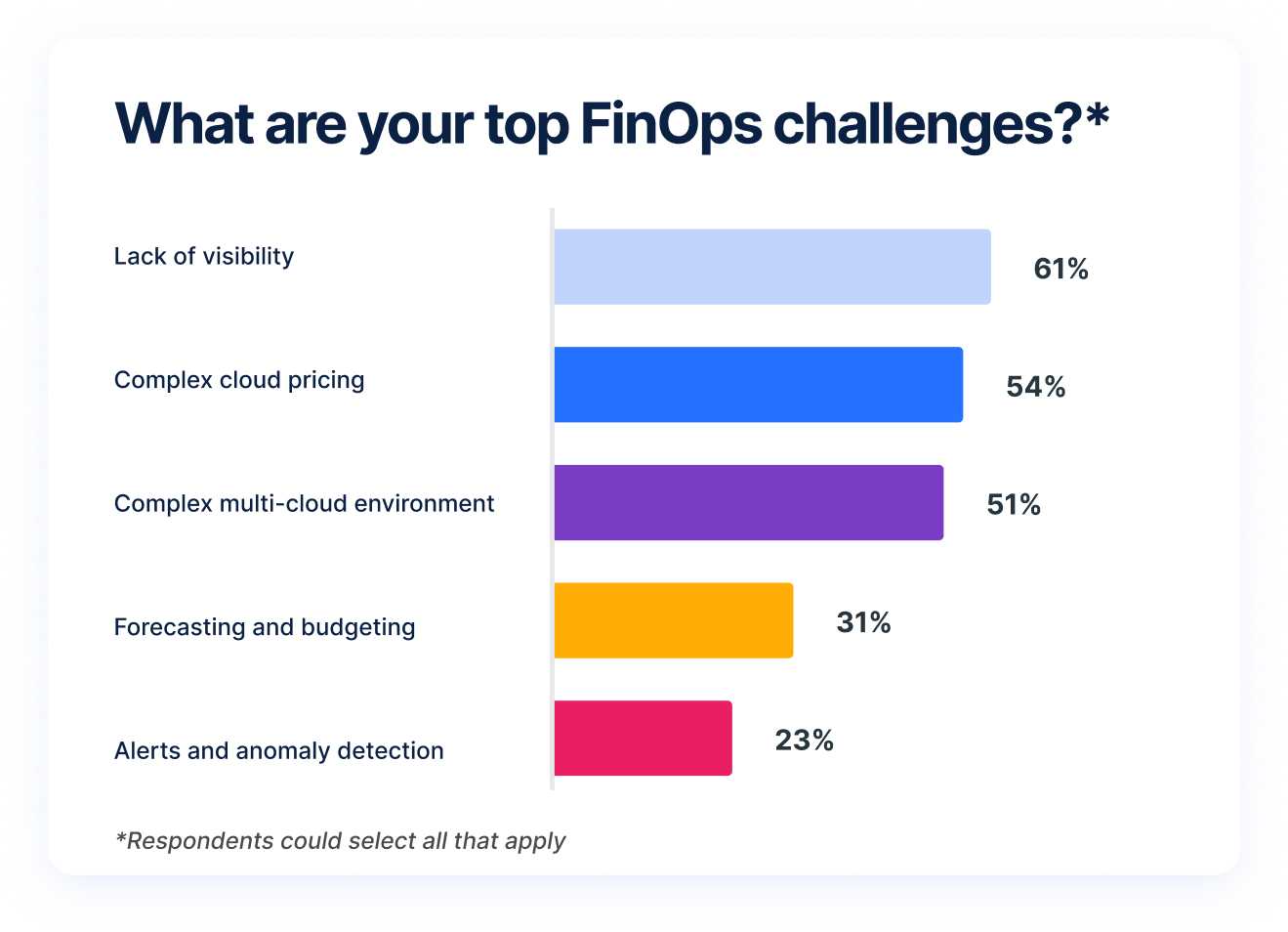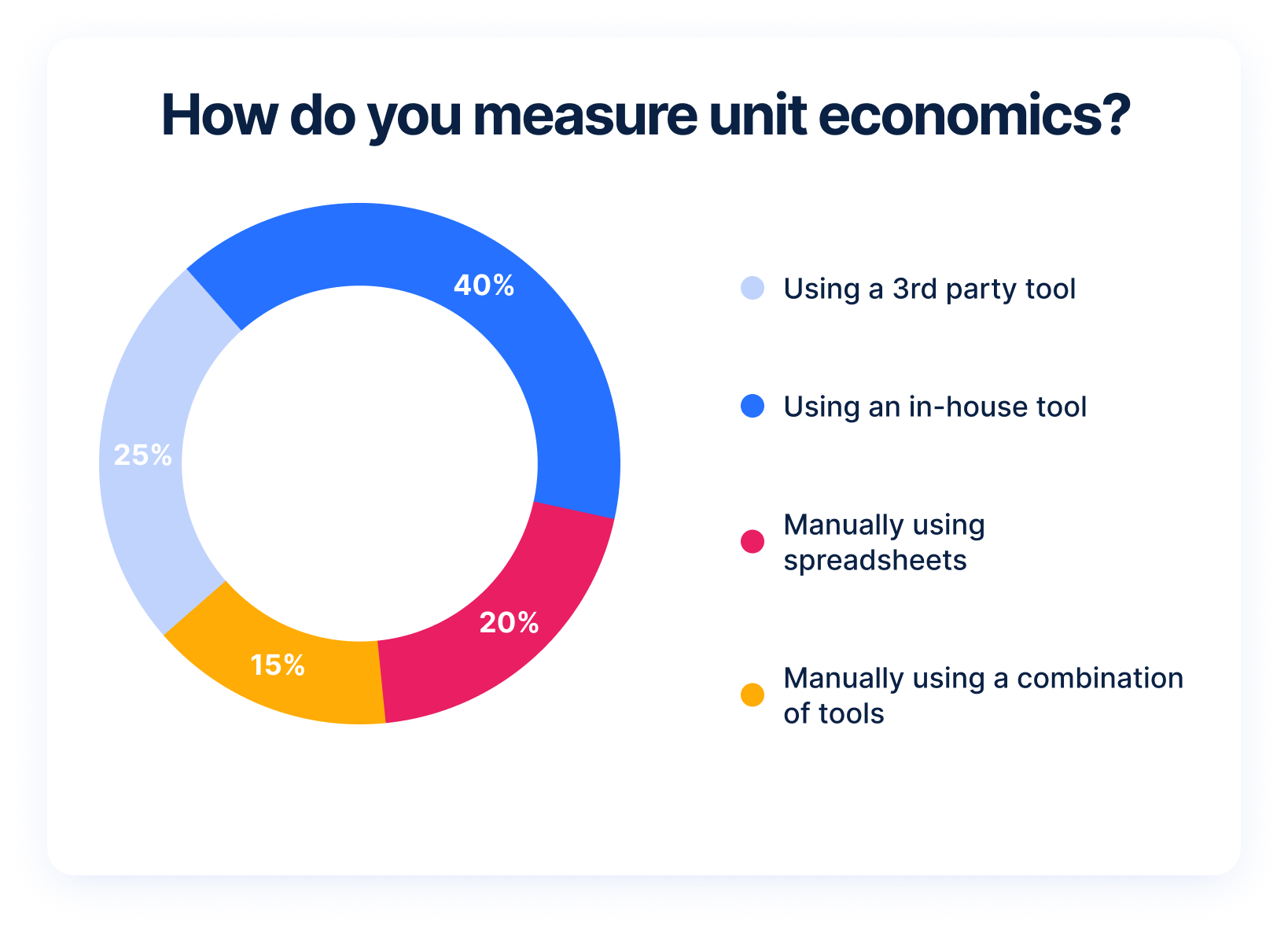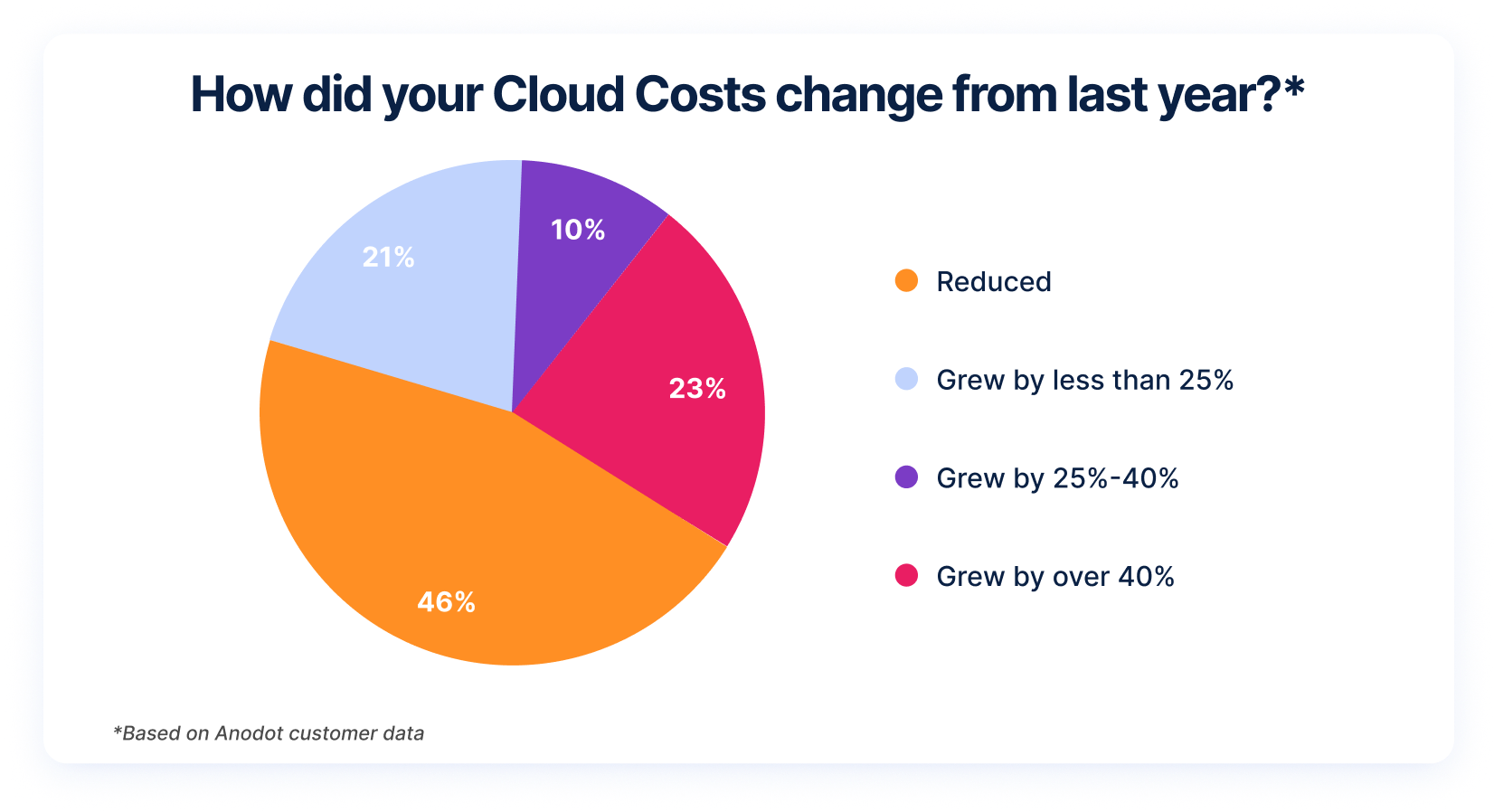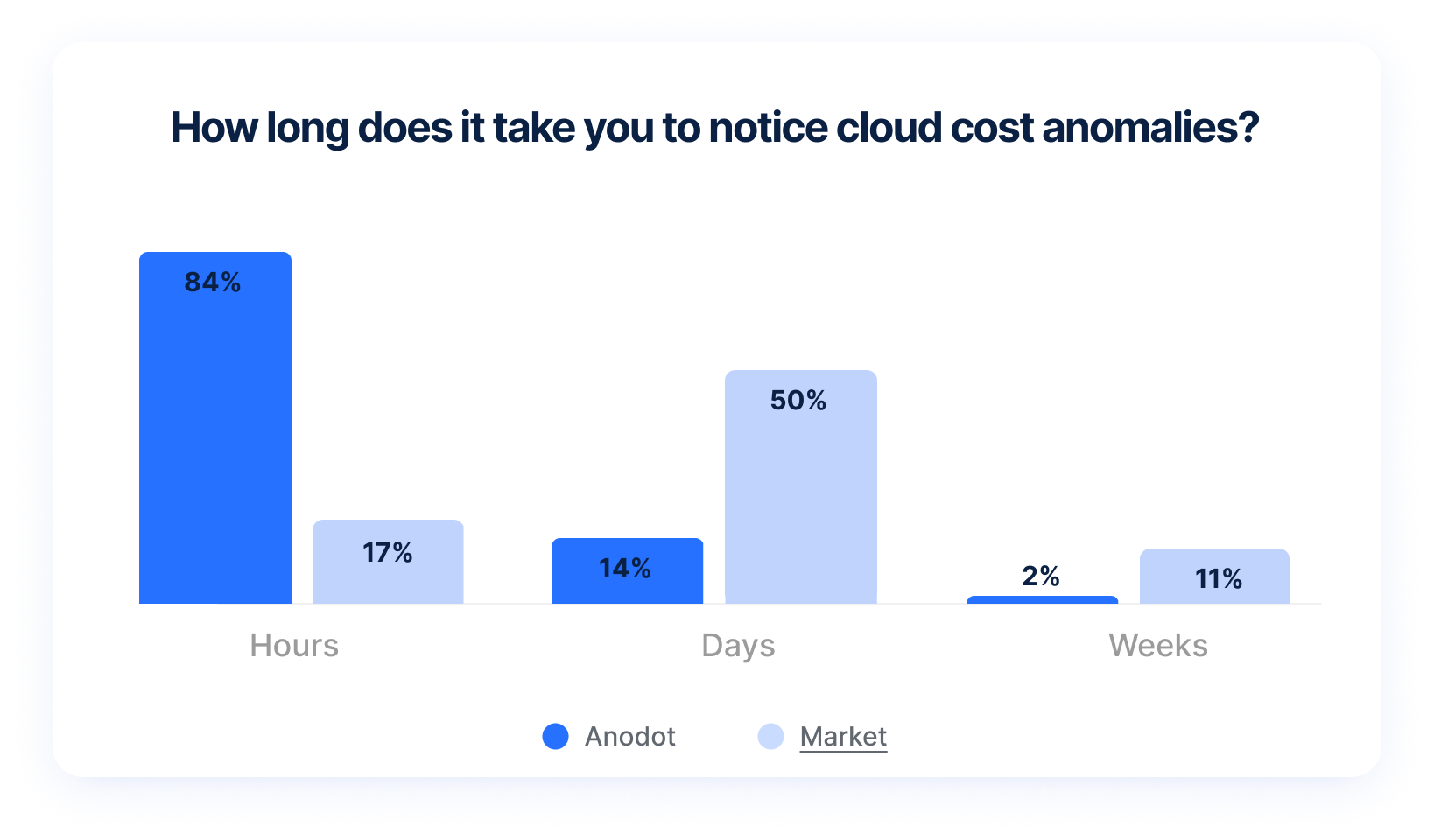The public cloud market is expected to grow significantly in 2023, and it’s no surprise. Gartner forecasts that end-user spending on public cloud services will rise by 21.7% to a total of $597.3 billion in 2023, up from $491 billion in 2022!
That’s why in June 2023, we launched our Anodot 2023 State of Cloud Cost survey to explore the impact of mature FinOps platforms on cloud spend control, time to detect cost anomalies, realized cost savings, easiest-to-use optimizations, and their influence on overall cost savings.
In this recap, we’ll give you a quick snapshot of what to expect in our report. But we really encourage you to check out our in-depth report for a deeper dive. Trust me, you’ll get loads more insights on cloud costs than this blog could ever give you!
Top challenges in cloud
Making smart decisions on cloud usage and costs relies solely on the ability to extract detailed data. So what are the biggest obstacles the market is currently facing when it comes to getting this crucial information? Let’s take a look at the top three!

True Visibility: Our reporting found that having clear visibility into cloud usage becomes a leading issue for our customers. This includes tracking resource utilization, monitoring costs, and optimizing cloud services.
Complex cloud pricing: Dealing with complex, proprietary billing data and different pricing models from providers can make it even trickier to normalize data and reconcile costs.
Complex multi-cloud environments: Take the two big challenges of true visibility and complex cloud pricing, mash them up, and what do you get? Complex multi-cloud environments.
Basically, the word “complexity” shows up way too often when we’re talking about cloud cost!
| Cloud waste stats: In our survey, 67% said less than a third of their cloud spending is wasted, up from 56% last year, showing improved FinOps adoption and growing awareness of cloud waste which is good news! The bad news? 20% of respondents remain unfamiliar with the cloud waste they possess. This highlights the need for efforts to address this issue!
Learn more on cloud waste costs. |
Most organizations want to measure unit costs
Unit economics metrics are a MUST for engineering teams. Why? It allows them to gauge the business value associated with cloud expenditures quantitatively. With these metrics, teams can make informed, data-driven decisions in the realm of Financial Operations (FinOps), ensuring optimal allocation of resources and maximizing returns.
The market definitely expressed interest in measuring unit costs; about 70% of respondents said they wanted to measure unit economics metrics but were not there yet.
What about the other 30%?
For those who do measure unit costs, 65% do so automatically with a tool they built in-house (45%) or a 3rd party solution (25%) like us! The remaining 35% rely on manual processes that use a combination of tools or spreadsheets to calculate their unit economics metrics, which blows our minds that some operations are still being done manually!

| Three is not a crowd: Over half of the respondents reported using third-party solutions to allocate direct and shared costs to business units, up from 38% last year, indicating that FinOps platforms are becoming increasingly popular with organizations.
Find out more on how third-party tools are transforming cloud costs.💡 |
Cloud costs are on the rise, but less so for Anodot customers
Organizations aspire to effectively manage cloud expenditure, yet struggle to achieve this goal. According to Flexera’s 2023 State of the Cloud Report, a whopping 82% of companies say controlling cloud spend is their biggest challenge, surpassing security for the first time.
That’s why FinOps is such a life-saver when it comes to cloud costs, companies maximize cloud investments, achieving more with fewer resources. When comparing our customer data to Flexera’s, most half of Anodot’s customers increased cloud spending by over 10% in the past year. But the best part? Over 45% reduced cloud spending through cost optimization, scaling adoption at the same or lower cost with Anodot!

| And the savings keep coming: Over 60% of customers saved more than 5% of the annual cloud spend through cost optimizations in the last 12 months with us. Additionally, over 40% saved more than 10%, and over 20% saved more than 20%.
See more of our cloud saving stats in our report! 💰 |
The easier the better
The concept of FinOps makes the spend smarter in all aspects. When it comes to innovation, don’t cut corners for the possibility of a few savings. FinOps can handle commitment-based discounts while engineering teams can take care of limiting costly resources.
Our data shows the popular use of commitment-based discounts for easiest-to-implement optimizations.
- Commitment-based discounts were implemented 47% of the time, accounting for 43% of savings.
- Terminations of idle resources were implemented 33% of the time, accounting for 42% of the savings.
- Most 3rd party tools claim to reduce costs through rightsizing, our data indicate limited impact and implementation difficulties.
Don’t let the word “commitment” scare you! These plans save you significant amounts of money on cloud costs!
| Third-party tools are spot on with cloud anomalies: According to our market survey, 32% relied on third-party tools while 16% used in-house solutions. Unfortunately, a whopping 20% could only spot a cost anomaly after receiving the bill.
Don’t miss out on our report for more of these findings! 😉 |
Anodot customers are beating anomalies at their own game
Detecting anomalies before they have a chance to do any real damage is the best way to avoid costly bills.
So, how fast can these anomalies be found? Based on FinOps Foundation’s 2023 report, respondents’ ability to detect cloud cost anomalies within hours remained similar to that of 2022.
Here’s what separates Anodot from others: 84% of our customers were able to spot anomalies in mere moments or within a few short hours, saving time and money simultaneously!

| Anodot keeps FinOps in practice: A remarkable 80% of surveyed Anodot customers described their cost optimization endeavors as proactive. |
Final thoughts:
And that’s your preview of our 2023 State of Cloud Cost Survey Report. We covered multiple aspects of cloud spending by using our general market survey and our own data findings.
Notable standouts include:
- The rise of third-party solutions
- The increasing challenge of true visibility into cloud costs
- Cloud spending and savings are more frequent with Anodot customers.
Want more of these findings? I bet you do! Check out our comprehensive report to get the full picture on 2023 cloud costs!





